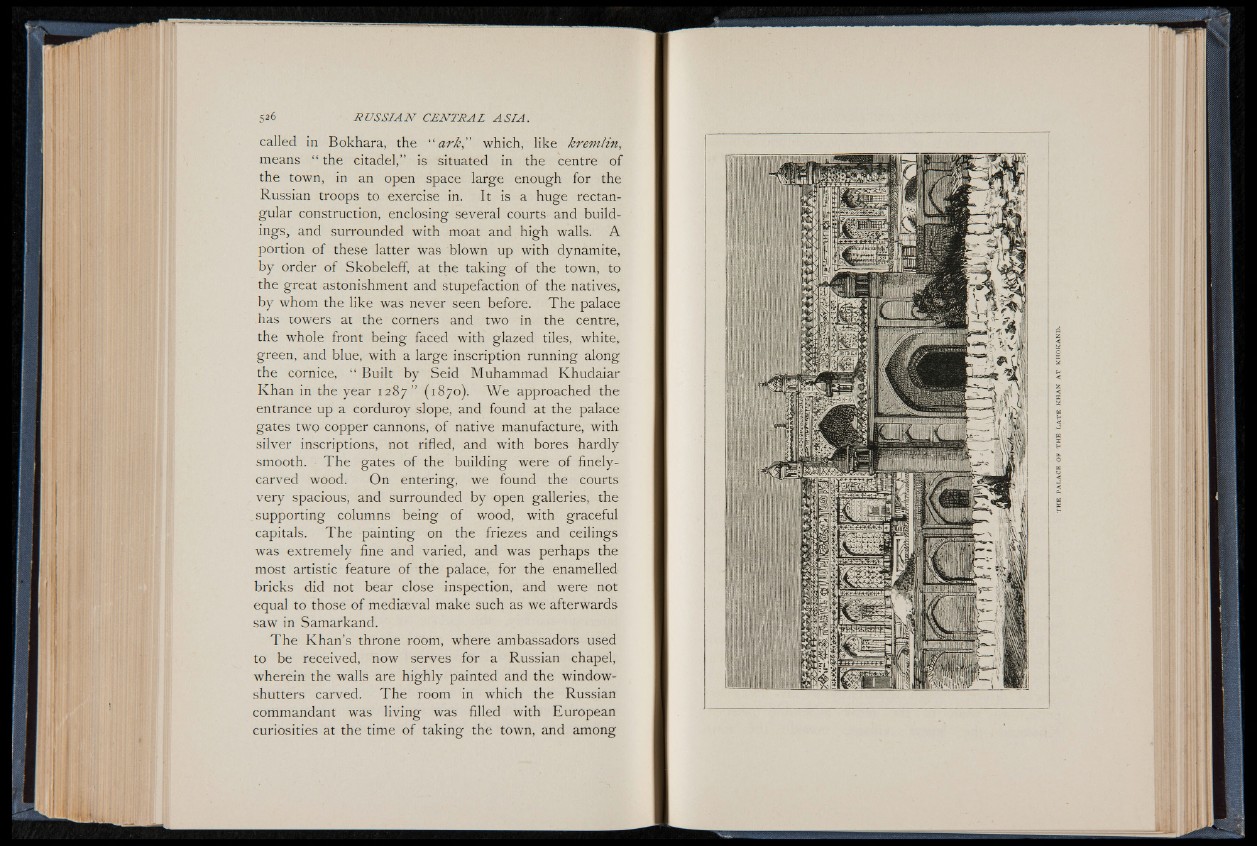
called in Bokhara, the “ ark," which, like kremlin,
means “ the citadel,” is situated in the centre of
the town, in an open space large enough for the
Russian troops to exercise in. It is a huge rectangular
construction, enclosing several courts and buildings,
and surrounded with moat and high walls. A
portion of these latter was blown up with dynamite,
by order of Skobeleff, at the taking of the town, to
the great astonishment and stupefaction of the natives,
by whom the like was never seen before. The palace
has towers at the corners and two in the centre,
the whole front being faced with glazed tiles, white,
green, and blue, with a large inscription running along
the cornice, “ Built by Seid Muhammad Khudaiar
Khan in the year 1287” (1870). We approached the
entrance up a corduroy slope, and found at the palace
gates two copper cannons, of native manufacture, with
silver inscriptions, not rifled, and with bores hardly
smooth. The gates of the building were of finely-
carved wood. On entering, we found the courts
very spacious, and surrounded by open galleries, the
supporting columns being of wood, with graceful
capitals. The painting on the friezes and ceilings
was extremely fine and varied, and was perhaps the
most artistic feature of the palace, for the enamelled
bricks did not bear close inspection, and were not
equal to those of mediaeval make such as we afterwards
saw in Samarkand.
The KhanJs throne room, where ambassadors used
to be received, now serves for a Russian chapel,
wherein the walls are highly painted and the window-
shutters carved. The room in which the Russian
commandant was living was filled with European
curiosities at the time of taking the town, and among